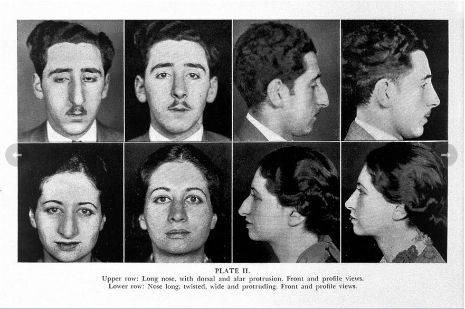During the first and second world war fingers were used for reconstructing noses the patients got a new nose but lost a finger in return

During the First and Second World War, fingers were used for reconstructing noses.

War is known for its devastating effects, leaving behind physical and emotional wounds that can last a lifetime. One particular consequence of war was the loss of noses. However, medical professionals during the First and Second World Wars found a unique solution to this problem - they used fingers for reconstructing noses. While this procedure provided patients with a new nose, it came at the cost of losing a finger.
The idea behind using fingers for nasal reconstruction stemmed from the need to assist soldiers who suffered facial injuries on the battlefield. These brave individuals faced the challenge of disfigured noses, which not only affected their appearance but also had a significant impact on their breathing and overall well-being. Surgeons sought innovative ways to reconstruct noses and restore a sense of normalcy for these wounded heroes.

A groundbreaking technique known as the “tube pedicle” flap was developed, which involved utilizing a patient’s own finger to create a new nose. This method required taking a section of the index finger, including its skin and underlying tissues, and transferring it to the nasal region. By carefully reshaping the finger tissue, surgeons were able to fashion a new nose for the patient.
Although the procedure undoubtedly provided significant benefits for those in need, it came at a cost. The sacrifice was in the form of losing the finger that was used for reconstruction. Patients had to make the difficult decision to exchange a functional finger for a reconstructed nose, aiming to regain some semblance of their pre-injury selves.
Despite the trade-off, this technique played a crucial role in helping soldiers and civilians alike rebuild their lives after the war. The ability to wear eyeglasses, facial prosthetics, and even simply look in the mirror without fear of their appearance gave patients a much-needed boost in confidence and self-esteem.
Reconstructive surgery has come a long way since these early finger-nose techniques. Advancements in medical technology and techniques now provide patients with a wide range of options for nasal reconstruction. However, it is essential to recognize and appreciate the pioneering efforts of those who paved the way for modern developments.
To learn more about this intriguing topic, you can refer to the article “Reconstruction of Noses by Means of the Patient’s Own Finger” published in the Journal of the American Medical Association (JAMA).
Note: The information provided in this article is based on the aforementioned source and does not encompass all the available literature on the topic.
Share
Related Posts
Quick Links
Legal Stuff

